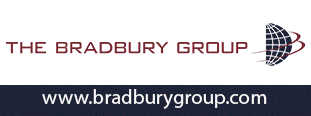Latest News |
| Henan Jiyuan I&S orders Danieli EWR to upgrade its bar mill 03 August 2020 |
| INTERVIEW: JSPL's steel export thrust to taper amid Indian market recovery 03 August 2020 |
| New slab grinder plant operating at Posco Pohang, Korea 03 August 2020 |
| China July steel PMI slipped marginally to 49.2% 03 August 2020 |
| CIS billet exports slow, but prices yet higher 03 August 2020 |
 |
 |
 |
 |
Domestic recovery, stronger rupee curb Indian exports: ICRA
Source: Kallanish
Indian steel exports are likely to be kept subdued in the coming months by a recovery in domestic demand that started in June, according to ICRA.
Indian finished steel exports surged 76% on-year in April-May to 1.71 million tonnes, while domestic demand slumped -69% due to the Covid-19 pandemic. Due to a 281% surge in semi-finished steel exports to China to 1.29mt, the country became the top destination for overall Indian steel exports in April-May, with an almost 48% share.
When compared with China’s average import purchase price of $972/tonne, India’s export realisation to China remained much lower at $357/t, implying low value-added products such as semis were exported.
In the absence of domestic demand, Indian mills reduced hot rolled coil export offers in early April to $368/t from about $460/t in mid-March. This created a wide gap between India’s and China’s HRC export prices.
“While subdued export HRC prices during April and May 2020 exerted pressure on the steel spreads of domestic blast furnace operators, a price recovery since end-May 2020 and softer landed coking coal prices in June 2020 led to an improvement in steel spreads in June 2020,” ICRA says in a note sent to Kallanish.
“Despite sharply lower HRC export realisations during April and May 2020, a significant drop in iron ore fine prices, as reflected by a drop in NMDC’s prices from INR 2,860/t ex-mine in March 2020 to INR 1,960/t in May 2020 provided some relief to domestic blast furnace players,” says Jayanta Roy, Senior Vice-President & Group Head, Corporate Sector Ratings, ICRA.
“When compared with the international prices, domestic iron ore prices remained significantly lower even after witnessing an increase in July 2020, giving a cost advantage of $103/t of steel produced,” he adds.
Despite a large iron ore price differential, such large export volumes are not sustainable in the near term. This is because India’s steel exports were a stop-gap arrangement during the period of subdued domestic demand, where domestic steelmakers preferred to export at less profitable prices to liquidate existing inventory and keep mills running, ICRA says.
Besides domestic demand recovering, the gap between Indian domestic and HRC prices is narrowing and the rupee has strengthened against the dollar.
